A prototype house for post-earthquake conditions tops a global list of contenders at the World Architecture Festival 2017.

WAF 2017 World Building of the Year: Post-earthquake Reconstruction/Demonstration Project of Guangming Village (China) by The Chinese University of Hong Kong. Winner of the ‘New and Old – Completed Buildings’ category
November 23rd, 2017
A number of the biggest winners at this year’s World Architecture Festival (WAF) in Berlin are projects that address issues faced by disadvantaged populations, and the concerns of people in the Asia Pacific region are chief among them.
An ambitious project that addresses the serious problems faced by the people of a low-wealth area in China has been honoured with the top-most accolade of ‘World Building of the Year’. “This building is a demonstration that architecture is just as relevant in the poorest of communities as it is in the richest,” said WAF Programme Director Paul Finch of the Post-earthquake Reconstruction/Demonstration Project of Guangming Village designed by The Chinese University of Hong Kong.
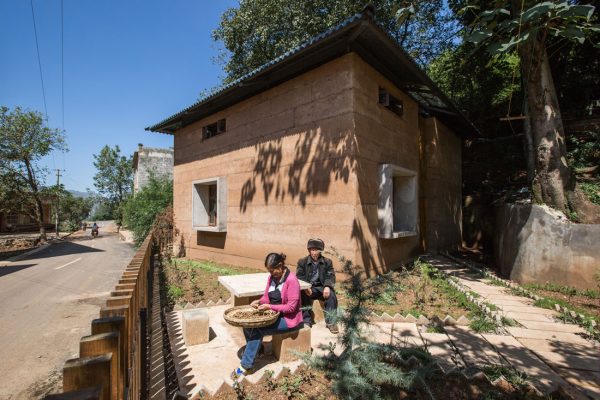
Above: Post-earthquake Reconstruction/Demonstration Project of Guangming Village by The Chinese University of Hong Kong.
The project (which won the ‘New and Old – Completed Buildings’ category before taking the overall title) was a response to the destruction that resulted from the Ludian earthquake in 2014, which affected most of the local buildings in Guangming. The prototype house (built for an aged couple) used traditional material and construction methods but with the addition of new technology. The goal was to provide villagers with a safe, economical, comfortable, and sustainable reconstruction strategy that they could afford, own, and pass on to their children.
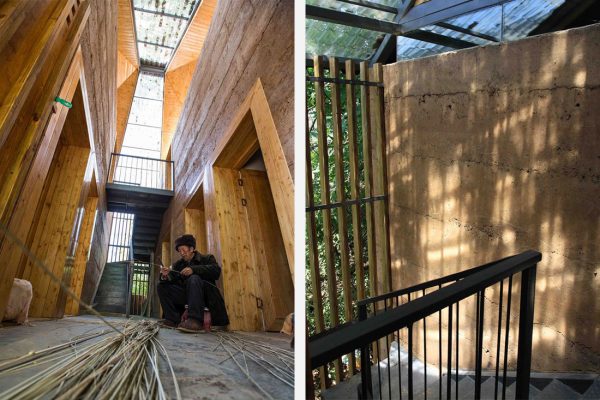
Above: Post-earthquake Reconstruction/Demonstration Project of Guangming Village by The Chinese University of Hong Kong.
“The architects succeeded in translating ‘four walls and a roof’ into something which, through architectural commitment, becomes a project that is much more profound,” said Finch, speaking on behalf of a super jury of five luminaries of the global architecture industry: Wong Mun Summ (Co-Founder, WOHA), Christoph Ingenhoven (Principal, Ingenhoven Architects), Ian Ritchie (Founder, Ian Ritchie Architects), James Timberlake (Principal, Kieran Timberlake) and Ellen van Loon (Partner, OMA).
Emphasising the strong performance of the Asia Pacific region at this year’s WAF and INSIDE World Festival of Interiors, multiple projects from our region received top honours on day three of WAF. Turenscape won ‘Landscape of the Year’ with the project titled Peasants and their Land: The Recovered Archaeological Landscape of Chengtoushan, Lixian County, China. A live 6,500 year-old archaeological site exists at the project location (protected by the local government), but it has been balanced with tourism and rice production. The judges were impressed with the “productive engagement between visitors and farmers who are able to maintain their traditional livelihoods.”
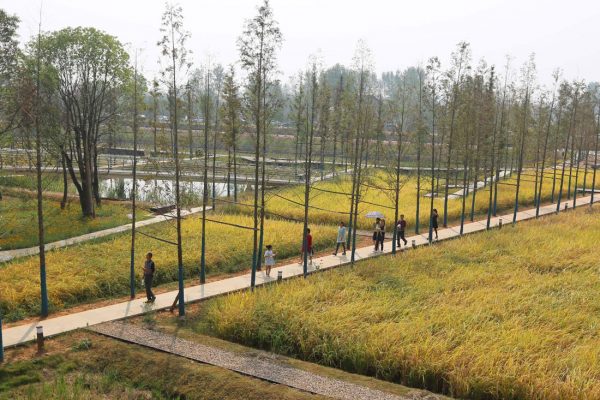
Above: Peasants and their Land: The Recovered Archaeological Landscape of Chengtoushan, Lixian County, China by Turenscape.
Iredale Pedersen Hook won ‘The Best Use of Colour Prize’ for the Fitzroy Crossing Renal Hostel in Australia – a long-term accommodation facility for indigenous Australians from outlying communities receiving renal dialysis. Light is filtered through screens that pick up colours related to the landscape and the local communities. Said the judges, “As the project’s main function is healing, the use of colour creates an emotional context that is deeply supportive and nurturing.”
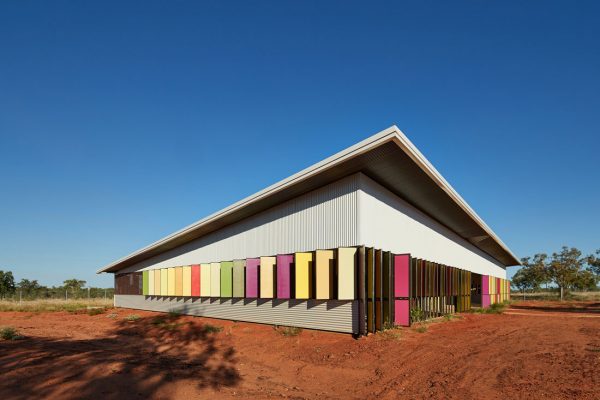
Above: Fitzroy Crossing Renal Hostel by Iredale Pedersen Hook.
‘Small Project of the Year’ was awarded to Eriksson Furunes + Leandro V. Locsin Partners + Jago Boase for Streetlight Tagpuro in the Philippines – “a genuine good news story,” said the judges, “whereby a community-engagement process led to an authentic and high quality result.” The project involved the relocation of NGO Streetlight’s office, orphanage and study centre in the wake of super-typhoon Haiyan, which struck the area in 2013. The project had earlier won the ‘Civic and Community – Completed Buildings’ category.
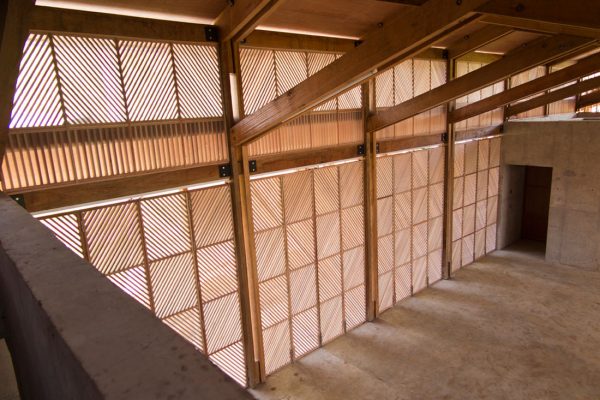
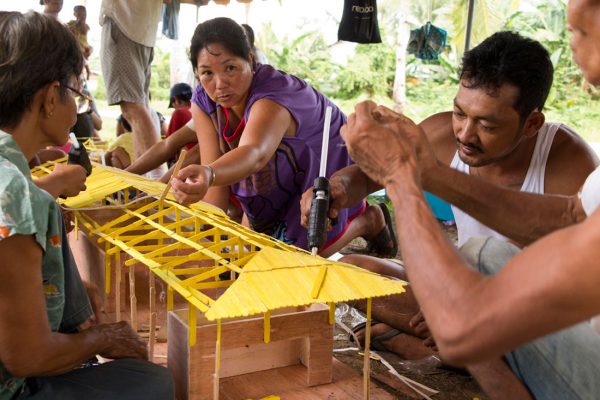
Above: Streetlight Tagpuro by Eriksson Furunes + Leandro V. Locsin Partners + Jago Boase. Photos by Alexander Eriksson Furunes.
Another project from our region was awarded the honour of ‘Future Project of the Year 2017’. The Sydney Fish Markets project by Allen Jack+Cottier and NH Architects was selected for the transformative potential it offers its area. It shows “vision beyond the brief,” said the ‘Future Project’ super jury. The project earlier won the ‘Masterplanning – Future Projects’ award, being applauded for “the brave idea of moving the site – combining architectural ambition with an honest appraisal of the delivery risks”.
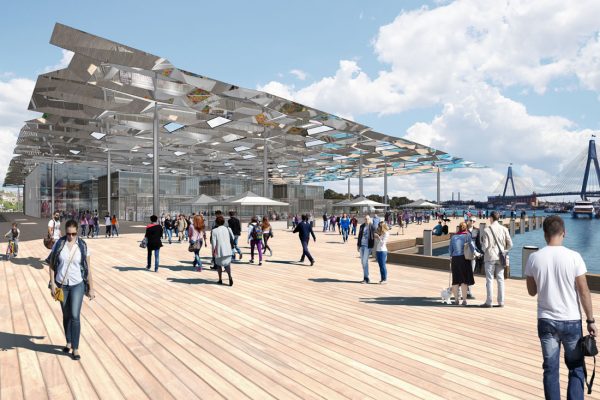
Above: Sydney Fish Markets by Allen Jack+Cottier and NH Architects.
Other APAC winners during the three-day festival included:
Indonesia’s Magi Design Studio won the ‘Health – Future Projects’ category for their Desa Semester philanthropic rehabilitation centre for mental health recovery (below). The judges admired the strong sense of social and environmental responsibility in the project.
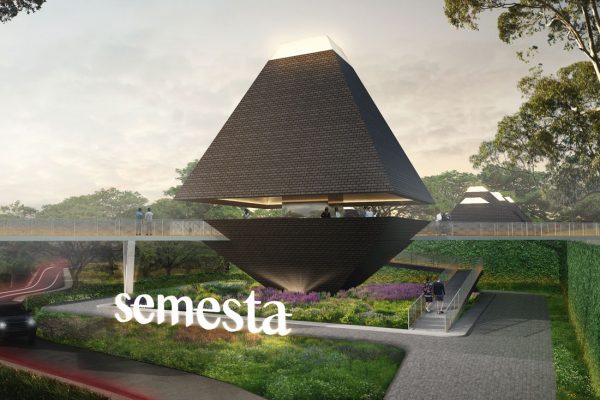
Sanjay Puri Architects won the ‘Infrastructure – Future Project’ category with The Bridge, India, which expresses the local tradition of brick-making in a contemporary way (below).
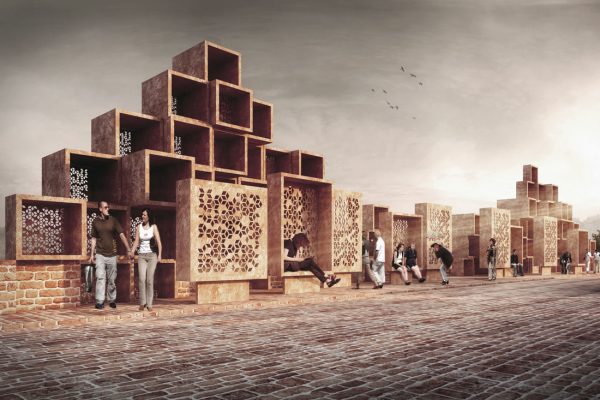
Nikken Sekkei won the ‘Office – Completed Buildings’ category with Co-op Kyosai Plaza, Tokyo. “Motivated by climate change and environmental responsibility, the building represents a holistic response from planning down to final details,” said the judges.
Vietnam’s Vo Trong Nghia Architects claimed the ‘Office – Future Projects’ category with their Viettel Offsite Studio, which proposes six V-shaped blocks arranged along the lay of a sloping landscape and connected by an open corridor (below).
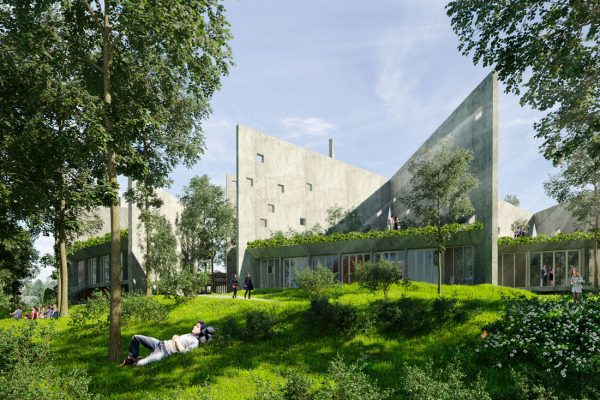
The same firm won the ‘House – Completed Buildings’ award for the Binh House in Ho Chi Minh City (read our feature in Cubes issue 88). The house serves as a multi-generational family home and sets a new benchmark for dense urban living (below).
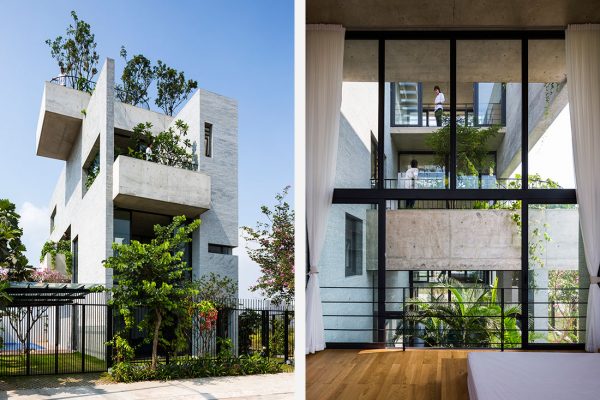
Winner of the ‘School – Completed Buildings’ category was Andrew Burges Architects, for their East Sydney Early Learning Centre: an adaptive re-use of an existing 1920s industrial building (below). The judges described the project as an incredibly creative and well-resolved rehabilitation building creating a mini city within an existing structure.
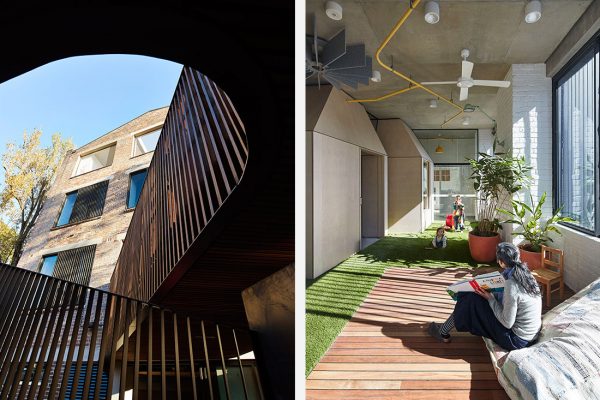
The ‘Education – Future Projects’ category was won by Feilden Clegg Bradley and SHALOTTO architecture for the Aga Khan Academy in Dhaka, Bangladesh (below). The concept was commended for its student-focused scale and intelligently designed landscape, as well as the “relevant and sustainable” use and detailing of brick.
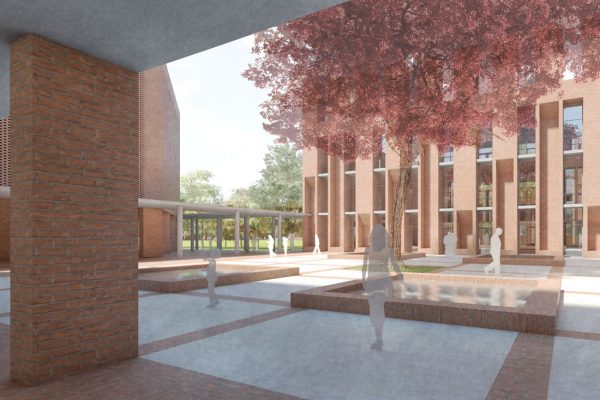
Vegetable Trellis, by Vietnamese practice Cong Sinh Architects, won the ‘Hotel & Leisure – Completed Buildings’ category (below). The project encourages visitors to grow their own vegetables at home. The judges applauded its “very strong potential for social impact,” and also agreed that this Ho Chi Minh project proves “green cities can be edible.”
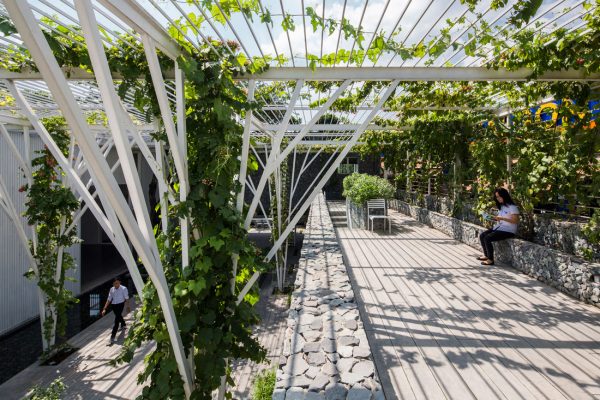
Bach with Two Roofs (New Zealand) by Irving Smith Architects won the ‘Villa – Completed Buildings’ category. The project was praised for its stewardship of the forest.
New Zealand practice Monk Mackenzie Architects won the ‘House – Future Projects’ category for the Queenstown House project, which sits into the landscape and creates a bridge in a seasonal flood zone (below).
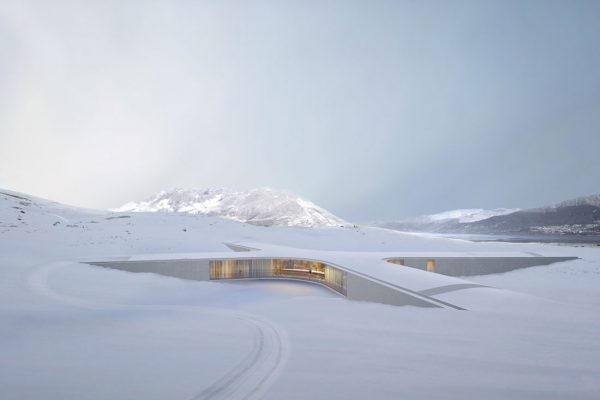
Congratulations to all the APAC winners! A long list of projects from APAC countries also appeared in the WAF 2017 shortlist. See the full list of winners at the WAF website.
The awards were presented at Arena Berlin from 15-17 November 2017.
Read our coverage of all the winners at INSIDE 2017 here.
A searchable and comprehensive guide for specifying leading products and their suppliers
Keep up to date with the latest and greatest from our industry BFF's!

Marylou Cafaro’s first trendjournal sparked a powerful, decades-long movement in joinery designs and finishes which eventually saw Australian design develop its independence and characteristic style. Now, polytec offers all-new insights into the future of Australian design.

Suitable for applications ranging from schools and retail outlets to computer rooms and X-ray suites, Palettone comes in two varieties and a choice of more than fifty colours.

Create a configuration to suit your needs with this curved collection.

Sub-Zero and Wolf’s prestigious Kitchen Design Contest (KDC) has celebrated the very best in kitchen innovation and aesthetics for three decades now. Recognising premier kitchen design professionals from around the globe, the KDC facilitates innovation, style and functionality that pushes boundaries.

Hassell recently presented its gigantic Metro Tunnel Project at the World Architecture Festival (WAF) alongside collaborators Weston Williamson and RSHP. We spoke to Hassell principal Ingrid Bakker about the scale of the work and what’s driving the design.

On the eve of 2024, our new editor, Timothy Alouani-Roby, addresses an exciting yet provocative open letter to the Australian architecture community on the opportunities of an era.
The internet never sleeps! Here's the stuff you might have missed

Landing in the city’s financial district for the first time, The Sebel Sydney Martin Place has had its modern interiors completed by Stack Studio.

As one of the many entries to The Social Space category at the 2024 INDE.Awards, this community centre is something out of the ordinary through its architectural design, that also provides a place for community and connection for many.